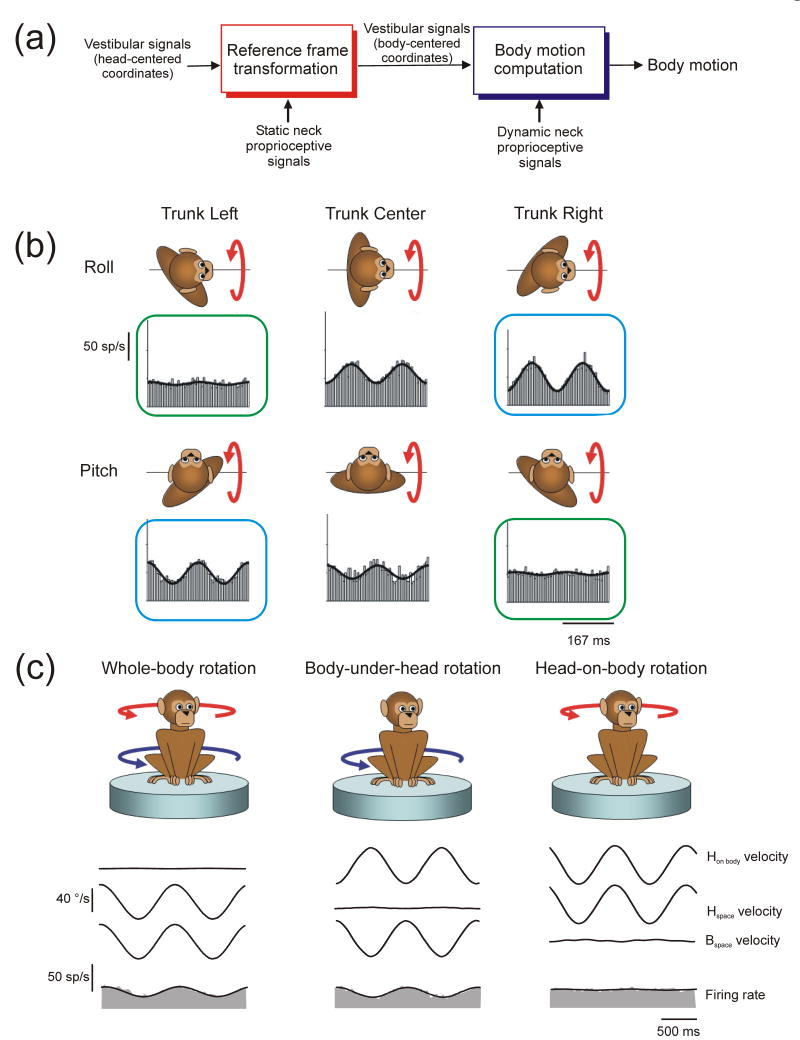Fig. 4.
Computations to estimate body motion by combining vestibular and neck proprioceptive signals. (a) Two required computational steps: 1) “Reference frame transformation” (left) transforms head-centered vestibular estimates of motion into a body-centered reference frame; vestibular signals must be combined non-linearly (multiplicatively) with static proprioceptive estimates of head-on-body position. 2) “Body motion computation” (right) involves combining vestibular estimates of motion with dynamic proprioceptive signals to distinguish body motion from head motion with respect to the body. For descriptive purposes the two sets of computations are illustrated serially as distinct processing stages. However, both computations could occur in tandem within the same populations of neurons. (b) Reference frame experiment in which head versus body-centered reference frames for encoding vestibular signals were dissociated by examining rostral fastigial neuron responses to pitch and roll rotation for different trunk re head orientations (i.e., trunk left, center and right). Blue and green boxes indicate rotations about common body-centered axes. Data replotted with permission from Kleine et al. [46] (c) Evidence for coding of body motion in the rostral fastigial nuclei [45**]. The example cell exhibited a robust response to body motion both during passive whole-body rotation that stimulated the semicircular canals (left) and during passive body-under-head rotation that stimulated neck proprioceptors, but did not respond to head-on-body rotation (right), illustrating that vestibular and prioprioceptive signals combined appropriately to distinguish body motion. Data replotted with permission from Brooks and Cullen [45**].

